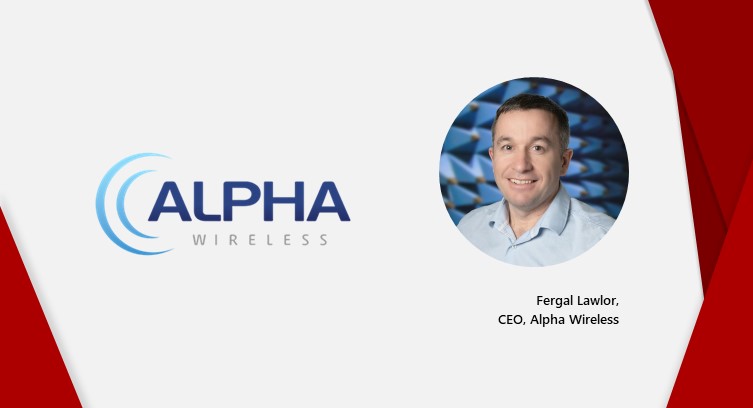In conjunction with MWC Barcelona 2022 which will be taking place this week, Tara Neal, Executive Editor of The Fast Mode spoke to Fergal Lawlor, CEO, Alpha Wireless on the company's plans and showcases for this year's event.
Tara: What do youthink MWC 2022 will be all about? And what are your MWC 2022 plans?
Fergal: We expect the primary focus at MWC 2022 will be on the delivery of connectivity everywhere, and the need for technology to achieve that goal using new 5G frequency bands. Alpha Wireless will showcase solutions at MWC 2022 that address these challenges, allowing network operators to bring coverage to where it’s needed while fast-tracking the planning process. We will unveil new technologies being used by leading mobile and fixed wireless service providers, including slim, multi-sector integrated canisters, unobtrusive concealed antenna solutions, and a distinctive 5G stadium antenna that enables uniform, sectorized coverage for every seat in a large event venue.
Tara: How has the pandemic impacted the operational and business landscape of the tech segment you are operating in?
Fergal: While the pandemic drove an increased need for essential connectivity, it also created new challenges and delays for network operators to complete field deployments of new mobile network infrastructure. Faced with global supply chain constraints and health-related safety concerns, mobile operators, system integrators and neutral site hosts have had to be more flexible and creative than before. We continue to innovate by developing solutions that accelerate and simplify new site deployments to enable delivery of new services that bridge the digital divide and allow subscribers to stay connected.
Tara: What emerging trends/technologies have you observed in your tech segment in recent months?
Fergal: As more consumers and enterprises worldwide adopt 5G, the race is on for network operators to deliver the ultimate connected experience. However, building out seamless 5G coverage and capacity presents a wide range of challenges. In many towns and suburban neighborhoods, for example, network operators are facing deployment delays because traditional macro panel antennas are considered too unsightly to receive site approval from local municipalities. Increasingly, operators are adopting integrated antenna solutions that offer a smaller footprint in a slim, unobtrusive profile, such as canister and tri-sector antennas, which can be mounted on poles, rooftops, or municipal infrastructure such as streetlights. And because these solutions can provide multiband support, neutral hosts like Cellnex Telecom are building out sites that enable multiple network operators to share infrastructure. This not only allows mobile operators to get to market faster, but it helps reduce capital expenditures to offset substantial investments in spectrum licenses.
Additionally, specific use cases present other unique challenges, such as the ability to provide uniform coverage in high-capacity areas. Sports stadiums and other entertainment venues present significant opportunity for network operators, but only if they can meet the demand with optimized quality. Many network operators are racing to build out an immersive 5G experience at major event venues worldwide, which requires particular wireless expertise and experience to meet demanding density requirements without creating interference between cells.Likewise, private networks present another unique use case, and utilities are embracing the opportunities that private 5G and LTE networks present to enable the resilient utility infrastructure of tomorrow. Secure, high-speed broadband connectivity is essential for an increasingly distributed, digital and automated grid, and organizations like the Utility Broadband Alliance (UBBA) recognize that private wireless networks provide a fast and affordable approach to greater connectivity.Finally, the growing importance of open ecosystems cannot be overstated, as operators worldwide seek to evolve their networks to 5G as cost-efficiently as possible. We are seeing more customers and partners embrace vendor-agnostic Open RAN technology to reduce costs and achieve the scalability needed to quickly realize the full potential of 5G.
Fergal Lawlor is the CEO of Alpha Wireless, which he founded in 2007. He is an Antenna Design Engineer with 30 years of experience in the telecommunications industry and extensive experience in base station antenna designs. Fergal holds a number of antenna related patents and is recognized as a leading innovator in the CBRS/3.5 GHz space.




















